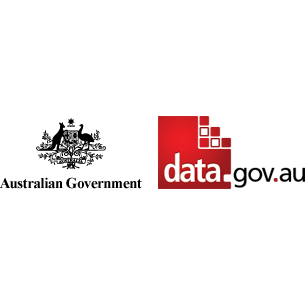Brief description
In March 2003, banks and selected Registered Financial Corporations (RFCs)
began reporting their international assets, liabilities and country exposures
to APR in ARF/RRF 231 International Exposures. This return is the basis of
the data provided by Australia to the Bank for International Settlements (BIS)
for its International Banking Statistics (IBS) data collection. APR ceased
the RFC data collection after September 2010.
The IBS data are based on the methodology described in the [BIS Guide on
International Financial Statistics
[PDF]](http://www.bis.org/statistics/intfinstatsguide.pdf) (see Part II
International banking statistics). Data reported for Australia, and other
countries, on the BIS website are expressed in United States dollars (USD).
Data are recorded on an end-quarter basis.
All banks operating in Australia complete ARF 231. Between March 2003 and
September 2010, only those larger RFCs with sizeable overseas assets and/or
liabilities completed RRF 231. Bank and RFC positions are reported in
Australian dollars (AUD). Non-AUD denominated positions have been converted to
AUD using an appropriate end-quarter exchange rate, so changes in reported
data between quarters are due not only to changes in positions but also
valuation gains or losses due to exchange rate changes.
There are two sets of IBS data: locational data, which are used to gauge the
role of banks and financial centres in the intermediation of international
capital flows; and consolidated data, which can be used to monitor the country
risk exposure of national banking systems. Only locational data are reported
in this statistical table and all assets are reported at market value. A
The locational data presented in this statistical table may differ from the
balance sheet data reported by banks (and RFCs between March 2003 and
September 2010) in their ARF/RRF 320.0 Statement of Financial Position return
to APR (and published in statistical tables B2, B3, B9 and B10). ARF/RRF 231
asks for gross positions to be reported (including on-balance sheet
derivatives). However, in ARF/RRF 320.0, derivative positions can be reported
on a net asset or net liability basis. This difference is particularly
relevant in the case of foreign currency derivative positions with residents
in Australia (included in other assets and other liabilities in the locational
data).
Data are shown for a selected group of countries that account for the bulk of
the total. Similar data for other countries are also available in statistical
table B12.1.1.
The positions by country are summed to produce a aTotal non-residentsa figure
that represents reporting entitiesa total positions with offshore
counterparties in all currencies. The positions shown for Australia are
positions with residents in foreign currency.
aLoansa comprise those financial assets that are created through the lending
of funds by a creditor (lender) to a debtor (borrower) and that are not
represented by negotiable securities.
Sale and repurchase transactions (repos) involving the sale of assets (e.g.
securities and gold) with a commitment to repurchase the same or similar
assets, financial leases, promissory notes, non-negotiable debt securities,
endorsement liabilities arising from bills rediscounted abroad and
subordinated loans (including subordinated non-negotiable debt securities) are
also included as aLoansa.
aDebt securities helda are all negotiable short- and long-term debt
instruments (including negotiable certificates of deposit, but excluding
equity shares, investment fund units and warrants). Also included are those
international debt securities held in an entityas own name but on behalf of
third parties as part of trustee business. Debt securities held on a purely
custodial basis for customers and debt securities acquired in the context of
securities lending transactions without cash collateral are not included in
the data on holdings of debt securities. The borrowing of securities that are
subsequently sold to third parties may result in negative holdings of
securities.
aOther assetsa mainly comprise equity shares (including mutual and investment
fund units and holdings of shares in a reporting entityas own name but on
behalf of third parties), participations, on-balance sheet derivative
contracts and working capital supplied by head offices to their branches
abroad.
Negative asset positions may be reported due to short selling of securities
acquired in the context of repo or bond lending transactions.
Reporting entitiesa holdings of international notes and coin that are in
circulation and commonly used to make payments are recorded as claims in the
form of loans and deposits. Loans that have become negotiable de facto are
classified under debt securities.
Full description
b12-1-hist.xls -Spatial Coverage And Location
text: Australia
Identifiers
- Local : assets-of-australian-located-operations
- URI : data.gov.au/data/dataset/9bba35ed-66c9-4cd0-af37-c303a0b23f7d



